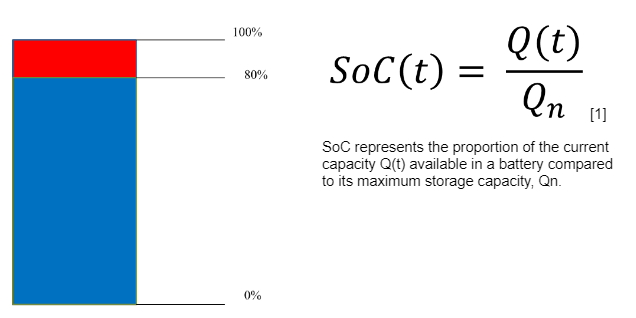Lithium-ion Battery State Of Charge Estimation

Background
Batteries, especially lithium-ion batteries, are indispensable components of modern life. As we
anticipate a shift towards green energy, their significance will only grow, extending beyond everyday
use to encompass grid energy storage and electric vehicles.
Monitoring the State of Charge (SoC) of lithium-ion batteries is crucial for assessing the available
energy stored within them. Unlike voltage and current, SoC cannot be directly measured. Instead, it is
inferred from measurable parameters such as voltage, current, or temperature. Accurate SoC monitoring
enables us to gauge the battery's energy capacity and optimize its usage, ensuring reliable performance
and longevity.

As the complexity of battery cell configurations increases, accurately estimating the State of Charge (SoC) becomes more challenging. This complexity arises from factors such as variations in cell characteristics, inter-cell interactions, and the dynamic nature of battery operation. In figure 2 it is shown levels of battery cell configuration complexity, increased from a single cell to 4 cells in series to 3 cells in parallel to 2S3P configuration.

Given these challenges, there is growing interest in leveraging machine learning methods to estimate the SoC of battery packs. Machine learning offers a promising approach to address the intricacies of multi-cell configurations and capture the nonlinear relationships between input parameters and SoC. By designing machine learning-based SoC estimation models, researchers aim to overcome the limitations of traditional methods and improve the accuracy and reliability of SoC predictions for complex battery systems.
References
[1] B. Sundén, “Thermal management of batteries,” Hydrog. Batter. Fuel Cells, pp. 93–110, 2019, doi: 10.1016/b978-0-12-816950-6.00006-3.